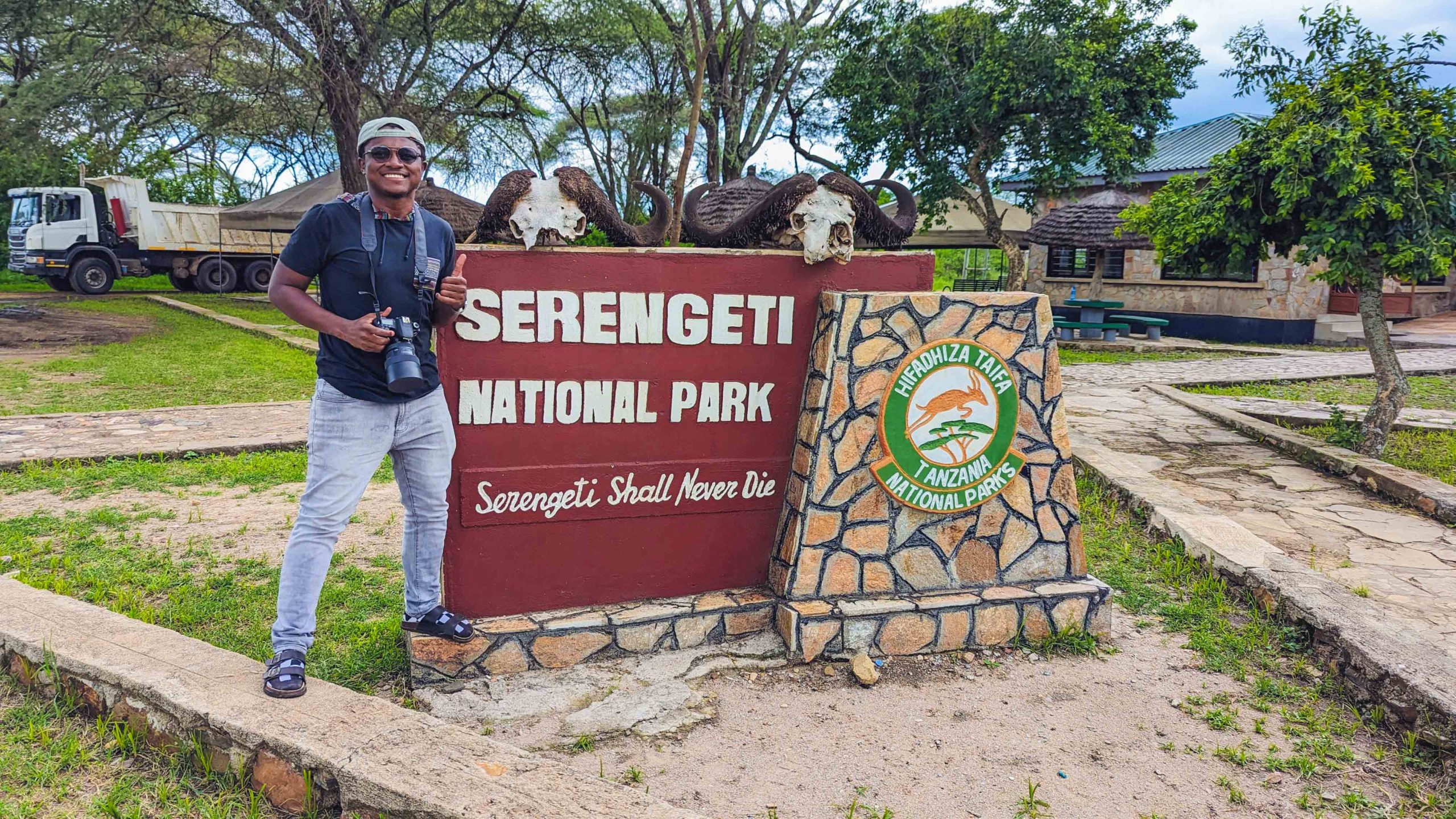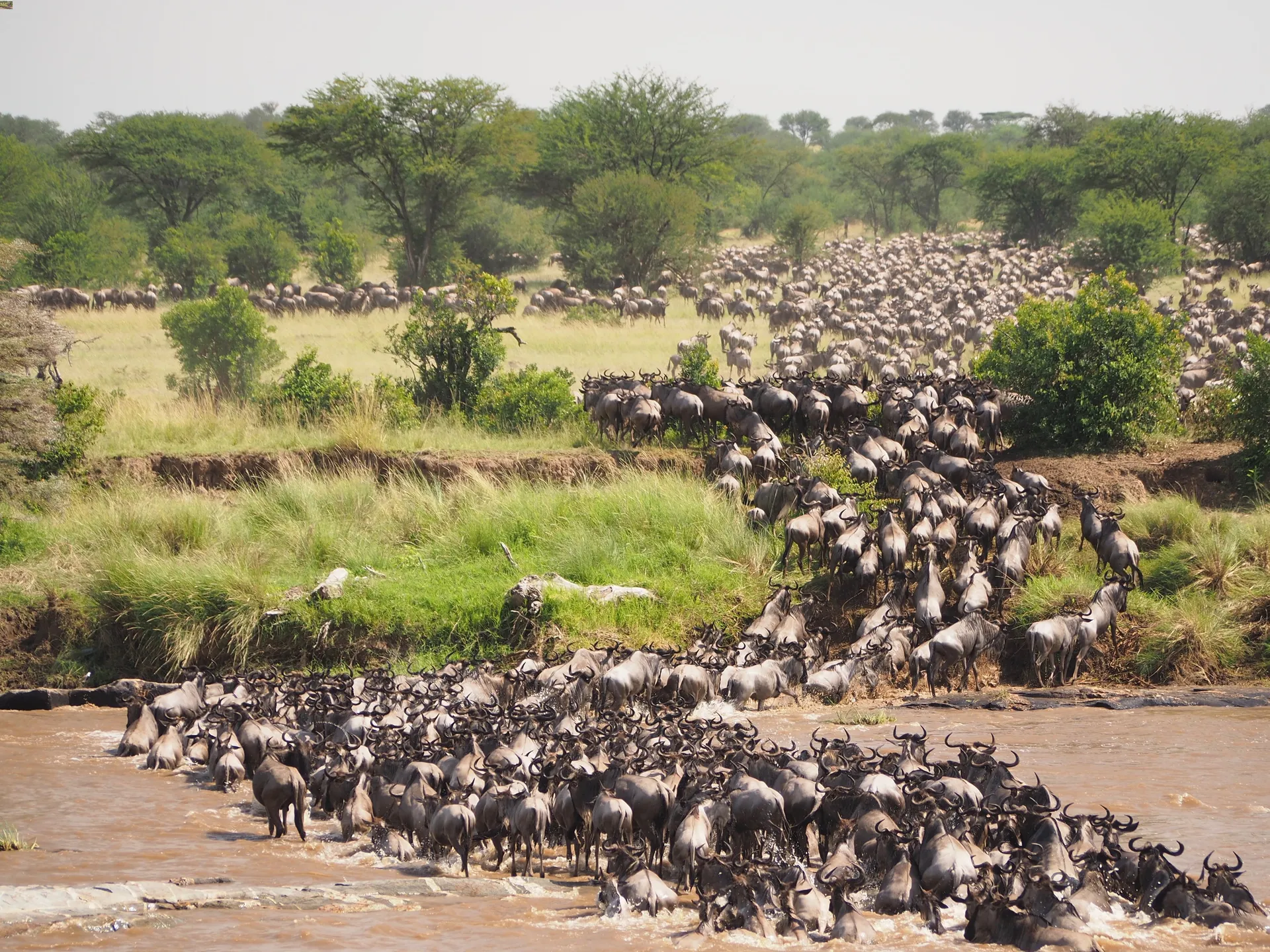Region: Mara
Access: By road
Attractions: The great migration, wildlife, savannah
Activities: Game drive, hot air balloon, safari
Accommodation: Available within the park and nearby towns
Best time to visit: All year round
Siringet - the land of endless plains: Home to the largest remaining unaltered animal migration in the world
Serengeti National Park, located in the Northern Central part of Tanzania, is a truly remarkable destination. Spanning across Mara and Simiyu regions, this UNESCO World Heritage Site and World Biosphere Reserve is home to the Serengeti ecosystem, which includes the Maswa, Grumeti and Ikorongo game reserves and the Maasai Mara National Reserve in Kenya. The name “Serengeti” originates from the Maasai word “Siringet,” meaning the land of endless plains. It’s a fitting name for this captivating realm of untamed wilderness. When it comes to wildlife safaris, the Serengeti National Park is an absolute must-visit
Covering an impressive expanse of over 14,763 square kilometers, the park is famous for its vast savannas that teem with an incredible diversity of wildlife. It boasts the largest populations of wild animals in the world, including wildebeest, zebras, hyenas, cheetahs, gazelles, and lions. One of the most awe-inspiring spectacles is the Great Migration, where over 2 million wildebeest, zebras, and gazelles migrate from Serengeti to the Masai Mara Reserve in Kenya each year, accompanied by some predators along the way. This natural phenomenon is truly unparalleled and cannot be experienced anywhere else in the world
Despite its abundant wildlife, the Serengeti has also been home to the Maasai people for centuries. However, when the park was established in 1951, the Maasai faced restrictions on grazing their cattle, which led to concerns of their expulsion. As a result, the Ngorongoro Conservation Area (NCA) was created in 1959, separating it from the Serengeti and allowing the Maasai to continue their traditional way of life within the NCA. However, there have been recent government initiatives to relocate the Maasai from their ancestral land to other areas of the country. This ongoing issue highlights the complex relationship between conservation efforts and the preservation of indigenous cultures
Serengeti National Park, located in the Northern Central part of Tanzania, is a truly remarkable destination. Spanning across Mara and Simiyu regions, this UNESCO World Heritage Site and World Biosphere Reserve is home to the Serengeti ecosystem, which includes the Maswa, Grumeti and Ikorongo game reserves and the Maasai Mara National Reserve in Kenya. The name “Serengeti” originates from the Maasai word “Siringet,” meaning the land of endless plains. It’s a fitting name for this captivating realm of untamed wilderness. When it comes to wildlife safaris, the Serengeti National Park is an absolute must-visit
Covering an impressive expanse of over 14,763 square kilometers, the park is famous for its vast savannas that teem with an incredible diversity of wildlife. It boasts the largest populations of wild animals in the world, including wildebeest, zebras, hyenas, cheetahs, gazelles, and lions. One of the most awe-inspiring spectacles is the Great Migration, where over 2 million
wildebeest, zebras, and gazelles migrate from Serengeti to the Masai Mara Reserve in Kenya each year, accompanied by some predators along the way. This natural phenomenon is truly unparalleled and cannot be experienced anywhere else in the world
Despite its abundant wildlife, the Serengeti has also been home to the Maasai people for centuries. However, when the park was established in 1951, the Maasai faced restrictions on grazing their cattle, which led to concerns of their expulsion. As a result, the Ngorongoro Conservation Area (NCA) was created in 1959, separating it from the Serengeti and allowing the Maasai to continue their traditional way of life within the NCA. However, there have been recent government initiatives to relocate the Maasai from their ancestral land to other areas of the country. This ongoing issue highlights the complex relationship between conservation efforts and the preservation of indigenous cultures
“To witness that calm rhythm of life revives our worn souls and recaptures a feeling of belonging to the natural world. No one can return from the Serengeti unchanged, for tawny lions will forever prowl our memory and great herds throng our imagination” – George Schaller


Interesting facts about Serengeti National Park
- Serengeti harbors the largest remaining unaltered animal migration in the world where over one million wildebeest engage in an annual circular trek spanning across the Serengeti ecosystem found in adjacent countries of Kenya and Tanzania.
- Serengeti was declared a World Heritage site by UNESCO in 1979 because of its great migration and unique features and topology of the park. Click here to read more
- Home to the world’s largest populations of wildebeest, zebra, lion, cheetah, hyena and gazelles.
- Gazetted in 1951, alongside the present-day Ngorongoro Conservation Area, Serengeti is the oldest national park in Tanzania
- Has the highest concentration of predator-prey in the world.
Getting to Serengeti National Park
Serengeti can be accessed by road or by chartered flights. By road, one may enter the park by passing through Arusha – Karatu and using the Naabi gate of the park. The other alternative is to use the road passing through Mwanza and Simiyu and access the park by using the Ndabaka gate. There is a curfew for when one can enter the park depending on the gate. Ndabaka’s curfew is 4pm















